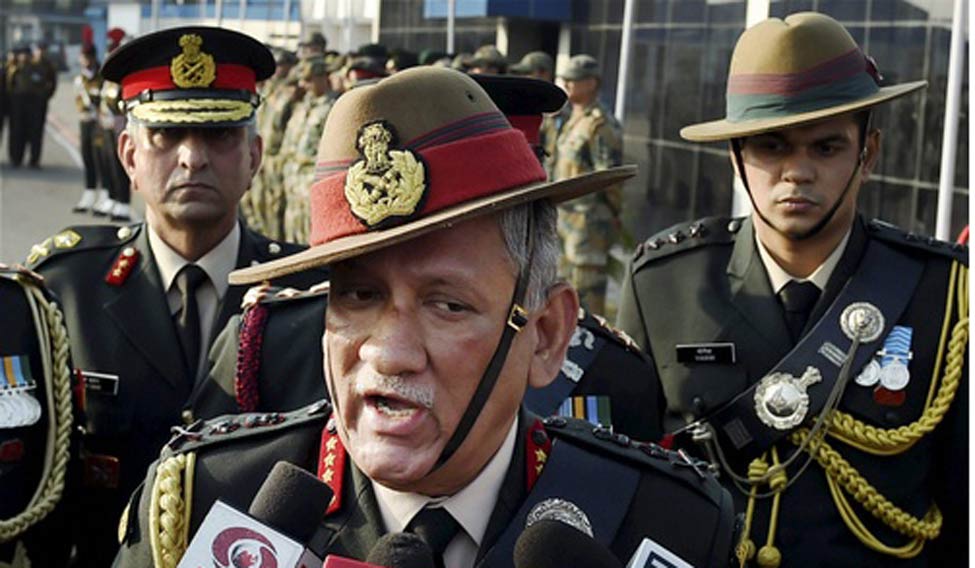Whether Army Chief Bipin Rawat's warning that ''those disrupting operations during encounters will be treated as 'overground workers of terrorists''' will deter protesters from marching towards encounter sites is difficult to tell, as similar advisory by police before has not worked. Nonetheless, there is no doubt that people marching towards encounter sites is emerging as a major challenge for the security forces.
Rawat issued the warning on Wednesday after paying tribute to four army men including a Major who were killed in encounters with militants in Kashmir at Hajin, Bandipora, and Handwara in Kupwara.
During the encounter, hundreds of locals had staged a protest in the area and clashed with police and CRPF.
He said security forces in Jammu and Kashmir are facing higher casualties because the local population is preventing them from conducting the operations and “at times even supporting the terrorists to escape”.
He also warned those displaying Pakistan and ISIS flags in Kashmir.
The police had earlier warned people not to come close to encounter sites in the form of processions. But the warning did not work as was seen four days ago at Kulgam where hundreds of people from neighbouring villages marched to the encounter sites and clashes with security forces.
Director General Police Jammu and Kashmir Sheesh Pal Vaid admitted the locals marching toward encounter sites was a big cause of concern.
“Marching of locals towards encounter sites and throwing stones at forces hampers anti-militancy operations,'' he told THE WEEK.
During the Kulgam encounter, people from at least 46 villages marched towards Frisal to have a glimpse of four militants killed in the encounter and to participate in their funerals.
Before that, youth from dozens of villages in Kulgam and Anantnag district marched towards Frisal on motorbikes and other vehicles in a bid to disrupt the force’s operation against militants.
In January, after news broke out about three holed-up local militants in a house at Awoora village close to a wildlife sanctuary in South Kashmir’s Pahalgam tourist spot, locals from Dachnipora villages marched towards the encounter site in their vehicles.
Also the residents from Bijbehara, the native area of the three slain militants, rushed to the spot, witnesses said. The protester's main aim was to help the militants flee from the spot.
The process of disruption started in 2001 from Pulwama where two locals converged on an encounter site where two local militants were trapped. Slowly it became a trend.
After the killing of Lashkar-e-Toiba commander Abu Qasim, whose funeral was attended by 50,000 people, marching towards encounter sites became a routine in south Kashmir. The development forced police to “stop handing over foreign militants to locals for burial in south Kashmir
A police officer said locals marching towards encounter spots was witnessed at Pampore in Pulwama on the Srinagar-Jammu national highway where militants deliberately rushed to Entrepreneur Development Institute for 48 hours in February last year.





